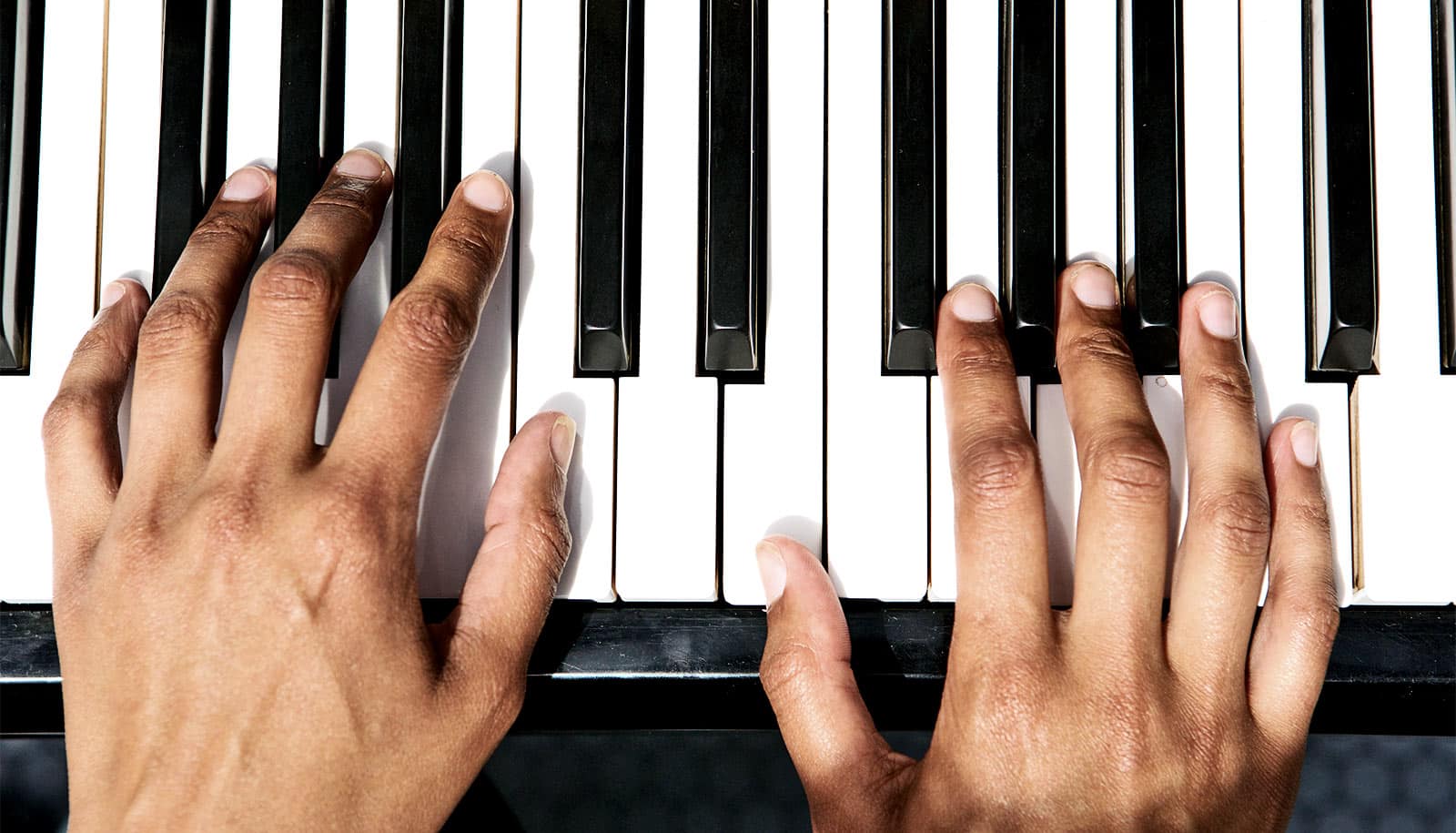Researchers have identified markers in the brain that indicate how musicians perceive beats.
Surprisingly, these markers did not correspond to the musician’s ability to either hear or produce a beat—only to their ability to synchronize with it.
How do people coordinate their actions with the sounds they hear? This basic ability, which allows people to cross the street safely while hearing oncoming traffic, dance to new music, or perform team events such as rowing, has puzzled cognitive neuroscientists for years.
The new study shines a light on how auditory perception and motor processes work together.
Listen to the beats the musicians had to copy:
Simple:
Moderately complex:
Complex:
“The authors, as performing musicians, are familiar with musical situations in which one performer is not correctly aligned in time with fellow performers—so we were interested in exploring how musician’s brains respond to rhythms,” says Caroline Palmer, a professor in the psychology department at McGill University.
“It could be that some people are better musicians because they listen differently or it could be that they move their bodies differently,” says Palmer, research chair in cognitive neuroscience of performance, and the senior author on the paper in the Journal of Cognitive Neuroscience.
“We found that the answer was a match between the pulsing or oscillations in the brain rhythms and the pulsing of the musical rhythm—it’s not just listening or movement. It’s a linking of the brain rhythm to the auditory rhythm.”
The researchers used electroencephalography (EEGs involve placing electrodes on the scalp to detect electrical activity in the brain) to measure brain activity as participants in the experiment, all of them experienced musicians, synchronized their tapping with a range of musical rhythms they were hearing. Doing so allowed the researchers to identify neural markers of musicians’ beat perceptions that corresponded to their ability to synchronize well.
“We were surprised that even highly trained musicians sometimes showed reduced ability to synchronize with complex rhythms, and that this was reflected in their EEGs,” say co-first authors Brian Mathias and Anna Zamm, both PhD students in the Palmer lab.
“Most musicians are good synchronizers; nonetheless, this signal was sensitive enough to distinguish the ‘good’ from the ‘better’ or ‘super-synchronizers,’ as we sometimes call them.”
It’s not clear whether anyone can become a super-synchronizer, but it may be possible to improve your ability to synchronize, Palmer says.
“The range of musicians we sampled suggests that the answer would be yes. And the fact that only 2-3% of the population are ‘beat deaf’ is also encouraging. Practice definitely improves your ability and improves the alignment of the brain rhythms with the musical rhythms. But whether everyone is going to be as good as a drummer is not clear.”
The National Science Foundation and the Natural Sciences and Engineering Research Council of Canada funded the work.
Source: McGill University



